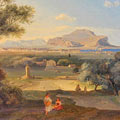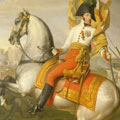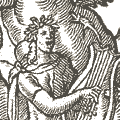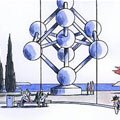Vasily Polenov (1844-1927)
Van Vasily Polenov zag ik vorig jaar in het Russisch Museum in Sint Petersburg twee schilderijen: Weppes Park in Normandiëuit 1874 en zijn meesterwerk Christus en de overspelige vrouw uit 1887. Dit thema werd eerder al door Henryk Siemiradzki verbeeld.
 Polenov studied under Pavel Chistyakov and in the Imperial Academy of Arts from 1863 to 1871. He was the pensioner of academy of arts in Italy and France, where he painted a number of pictures in the spirit of Academism on subjects taken from the European history (“The Right of mister”, 1874, Tretyakov gallery); at the same time he worked a lot in the open air.
Polenov studied under Pavel Chistyakov and in the Imperial Academy of Arts from 1863 to 1871. He was the pensioner of academy of arts in Italy and France, where he painted a number of pictures in the spirit of Academism on subjects taken from the European history (“The Right of mister”, 1874, Tretyakov gallery); at the same time he worked a lot in the open air.Polenov took part in the Russo-Turkish War, 1877-1878 as the war artist. Returning from the war, he joined the Peredvizhniki, taking part in their mobile exhibitions. His works won the admiration of Pavel Mikhailovich Tretyakov, who acquired many of them for his gallery.

Polenov’s meesterwerk:
Christus en de overspelige vrouw, 1887
Christus en de overspelige vrouw, 1887

hetzelfde thema 14 jaar eerder geschilderd door Henryk Siemiradzki, 1873
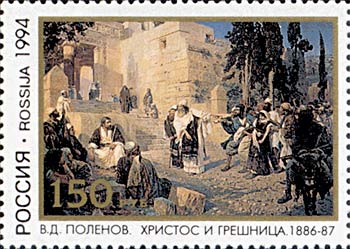
Polenov‘s meesterwerk op een postzegel ter gelegenheid van zijn 150e geboortedag in 1994
In the late 1870s, Polenov concentrated on painting landscapes in the realist tradition of Aleksey Savrasov and Fyodor Vasilyev. He attempted to impart the silent poetry of Russian nature, related to daily human life. He was the one of the first Russian artists who achieved a plein air freshness of color combined with artistic finish of composition (“The Moscow court yard “, 1878; “The Grandmother’s garden”, 1878; “Zarosshy pond”, 1879). The principles developed by Polenov had a great impact on further development of Russian (and especially Soviet) landscape painting.
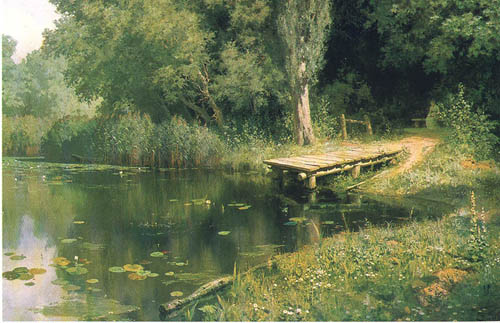
Zarosshy pond, 1879
Polenov’s sketches of Middle East and Greece (1881-1882) paved the way for his masterpiece, “The Christ and the Sinner” (1886-87), an interesting attempt to update picturesque system of academism. In the works of the 1880s, Polenov tended to combine New Testament subjects with his penchant for landscape. Since the 1870s, Polenov also turned to theatrical decoration. Most notably, he decorated Savva Mamontov’s mansion and his Private Russian Opera. In 1910-1918, Polenov was involved into a folk theatre project.
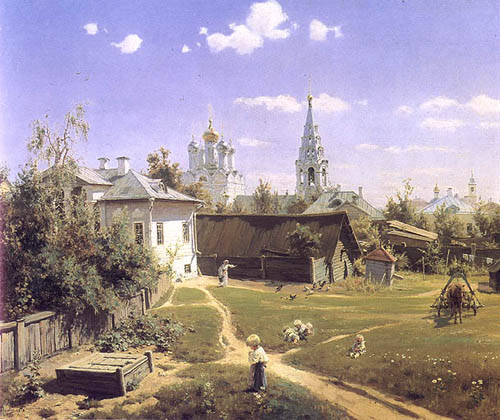
The Moscow court yard, 1878
Vasily Polenov | meer Russische schilders





